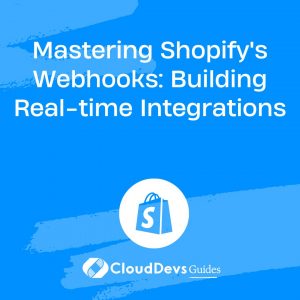Shopify Development: Unveiling the Power of Liquid Filters
Understanding Liquid in Shopify
Liquid is Shopify’s templating language that allows developers to render dynamic content on storefronts. It powers the themes in Shopify, enabling merchants and developers to create personalized experiences for customers. Among the core features of Liquid are its filters, which are used to modify the output of variables and render data in the desired format.
Why Liquid Filters Are Essential
Liquid filters are powerful tools for manipulating strings, arrays, objects, and more within Shopify templates. They allow you to perform tasks like formatting dates, converting strings to uppercase, or even modifying the presentation of product prices. Understanding and utilizing these filters effectively can greatly enhance the customization of your Shopify store.
Key Liquid Filters and Their Use Cases
1. String Filters
String filters in Liquid allow you to manipulate text, making them incredibly useful for dynamic content.
Example: Converting Strings to Uppercase
```liquid
{{ "hello shopify" | upcase }}
```
Output: `HELLO SHOPIFY`
This filter is handy when you need consistent capitalization across your site, such as for headings or product titles.
Example: Truncating Strings
```liquid
{{ "This is a long product description" | truncate: 20 }}
```
Output: `This is a long prod…`
Truncation is useful for managing lengthy text in limited spaces, such as product listings or summary views.
2. Number Filters
Number filters help you format and display numerical data in a user-friendly way.
Example: Formatting Prices
```liquid
{{ 1999 | money }}
```
Output: `$19.99`
This filter ensures that prices are displayed in a consistent currency format, enhancing the overall user experience.
Example: Rounding Numbers
```liquid
{{ 4.567 | round: 1 }}
```
Output: `4.6`
Rounding is essential when dealing with numerical data that needs to be simplified for display, such as ratings or discounts.
3. Array Filters
Array filters allow you to manipulate and sort collections of data, such as products or customer orders.
Example: Sorting Products by Price
```liquid
{% assign sorted_products = collection.products | sort: 'price' %}
```
Sorting arrays is crucial for creating custom collections or sorting products dynamically based on user preferences.
Example: Reversing an Array
```liquid
{% assign reversed_products = collection.products | reverse %}
```
Reversing an array is useful when you need to display items in a different order, such as showing the newest products first.
4. Date Filters
Date filters allow you to format dates in a way that suits your store’s design and functionality.
Example: Formatting Dates
```liquid
{{ article.published_at | date: "%B %d, %Y" }}
```
Output: `August 13, 2024`
This filter is ideal for blog articles, product releases, or any other content where displaying the date is important.
Advanced Use Cases of Liquid Filters
1. Combining Filters
You can chain multiple filters together to achieve complex data manipulation.
Example: Capitalizing and Truncating a Product Title
```liquid
{{ product.title | upcase | truncate: 10 }}
```
Output: `PRODUCT T…`
This technique is useful for creating consistent and user-friendly content across your store.
2. Conditional Rendering with Filters
Liquid filters can be combined with conditional statements to display content dynamically based on certain criteria.
Example: Displaying a Custom Message for High-Priced Products
```liquid
{% if product.price | money > 100 %}
{{ "This is a premium product!" }}
{% endif %}
```
This approach is perfect for highlighting special features or calling attention to premium items.
Conclusion
Liquid filters are powerful tools in the hands of Shopify developers, enabling the customization of storefronts in a way that meets both aesthetic and functional requirements. From basic string manipulation to complex data handling, understanding how to effectively use Liquid filters will unlock new possibilities in your Shopify development projects.
Further Reading
Table of Contents









